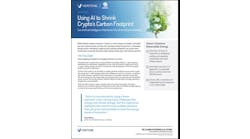Steve Larson, Larson Fan Company
Air leaks may not be the sexiest energy efficiency measure, but they waste a lot of energy. Here Steve Larson, of Larson Fan Company, describes a big home air leak and how to correct it.
We are currently at the threshold of the green economy, which is just starting to get its act together, but is limited by the amount of money people and business have to spend. The true test of a good green product is the effectiveness of the product, upfront cost and return on investment.
Most renewable energy upgrades have a large upfront cost. It can take a decade or so to recover those costs, which prevents many from actually undertaking the projects. Great progress has been made regarding lighting, but lighting is only ten percent or less of a typical homeowner’s utility bill. We should instead focus on heating and cooling, which accounts for far more of our energy use.
Above you and hiding out of sight may be a homeowner’s biggest air leak. Addressing this issue will lower energy usage and utility bills. Most homes in this country have ceiling mounted ventilation fans, and most local building codes now require a ventilation system in each bathroom for new and remodeled homes. Many of these revised local building codes also rule out a window that opens as a ventilation system. So the trades now need to install a ventilation fan, with the ceiling mounted fan being the most popular choice.
Behind the grill of that ceiling ventilation fan and off to the side, there is an exhaust vent line that is several inches in diameter that should be leading outside for each ventilation fan in a typical home installation. At the outlet point of this vent, if it’s horizontal, you probably have a fixture with several louvers that don’t seal very well.
The vertical orientation is just like a small chimney and once an upward draft of warm air is started, it will continue, causing more heat loss. Most installations have switched to the horizontal orientation to reduce the chance of water damage from going through the roof and to reduce the chimney effect of a vertical installation.
When the wind blows across either exhaust vent orientation, you’ll get a venture effect in the exhaust line, which will slowly draw out the air inside the house, more than you might think. Now most of these ventilation fans have a back draft preventer. If it’s still there and working properly (the plastic hinge pins break easily), it will stop most of the wind gusts. A closer look at that backdraft preventer, shows that it also doesn’t seal very well. It’s only to prevent gusts of air from going into the house, and is designed to let air out easily.
There are a few products currently on the market that address this problem. Most of them are designed to be placed in or at the outlet of the exhaust vent line. Any item located at either of these areas are in the exhaust air stream, and will collect dust and lint, which will accumulate over time, and eventually compromise performance. Also the ones at the end are usually mounted outside of the house where it is subject to damage and being weighted down (restricting air flow) with leaves, rain, snow or ice.
The Larson Fan Company has developed a new solution for this problem. Although the original intent was to keep heat from escaping out of the ventilation fan during winter, we found that it works very well during the summer when air conditioning, especially central air, is in use. Our solution is a replacement fan insert assembly that has a true, built-in damper. The replacement fan assembly uses the weight of the moving parts of the motor and blower wheel to hold a damper (built into the blower wheel) close when the motor is off. This true damper seals the exhaust vent so air cannot move in either direction.
With this product’s built-in damper, it helps in keeping the humidity out during the cooling season, which reduces the run time of the air conditioning. Product testing shows a 10 percent reduction in annual utility bills, mainly in the summer and winter. How much it will save your customers depends on their location and how much the air conditioner is used. Our testing was done in Michigan. You can expect better results if the cooling seasonin your area is longer than three months.
This replacement damper fan insert doesn’t have a huge upfront cost, less than $100. This means the return on investment will be measured in months and not years. Most installations will reduce utility bills in the first year or sooner to cover the cost of the product.
This damper fan is an additional option for easy low hanging fruit that is doable now and makes sense for those who want to reduce energy use as the green economy continues to grow.
Steve Larson is president of Larson Fan Company. Industry Perspectives’ articles do not necessarily represent the views of EnergyEfficiencyMarkets.com or its staff.







